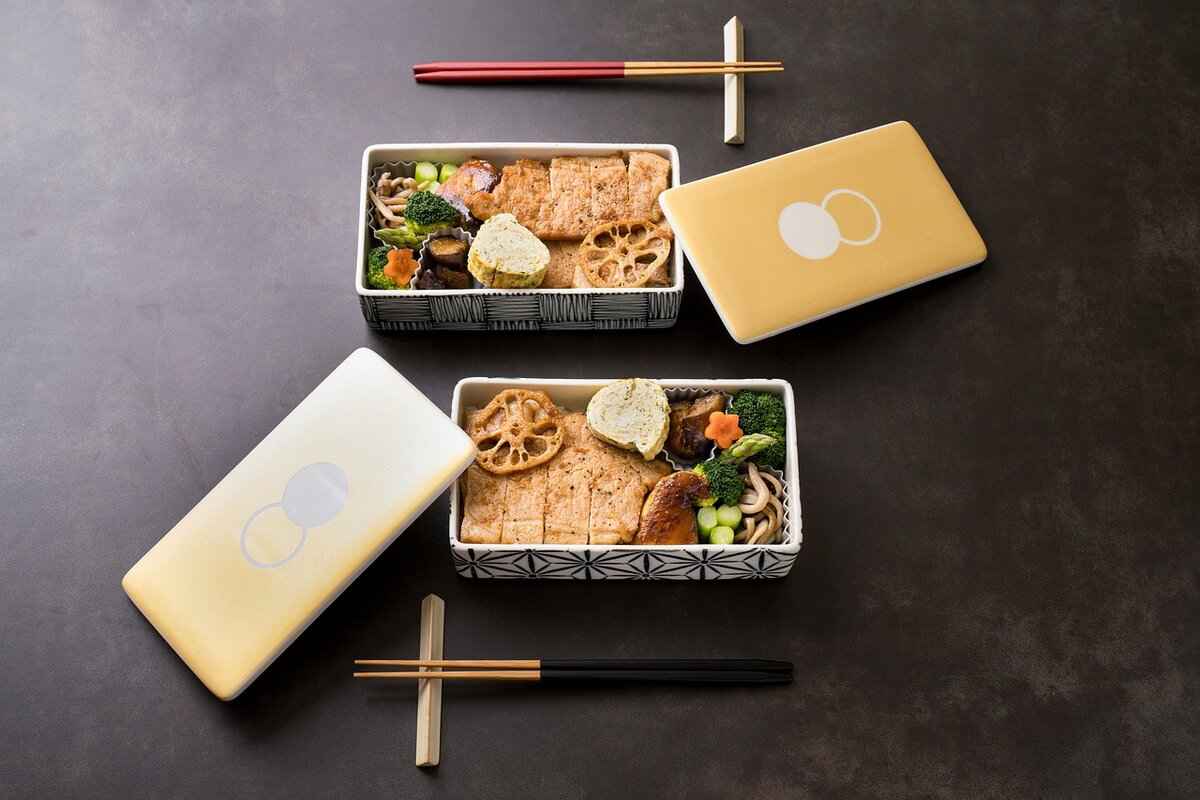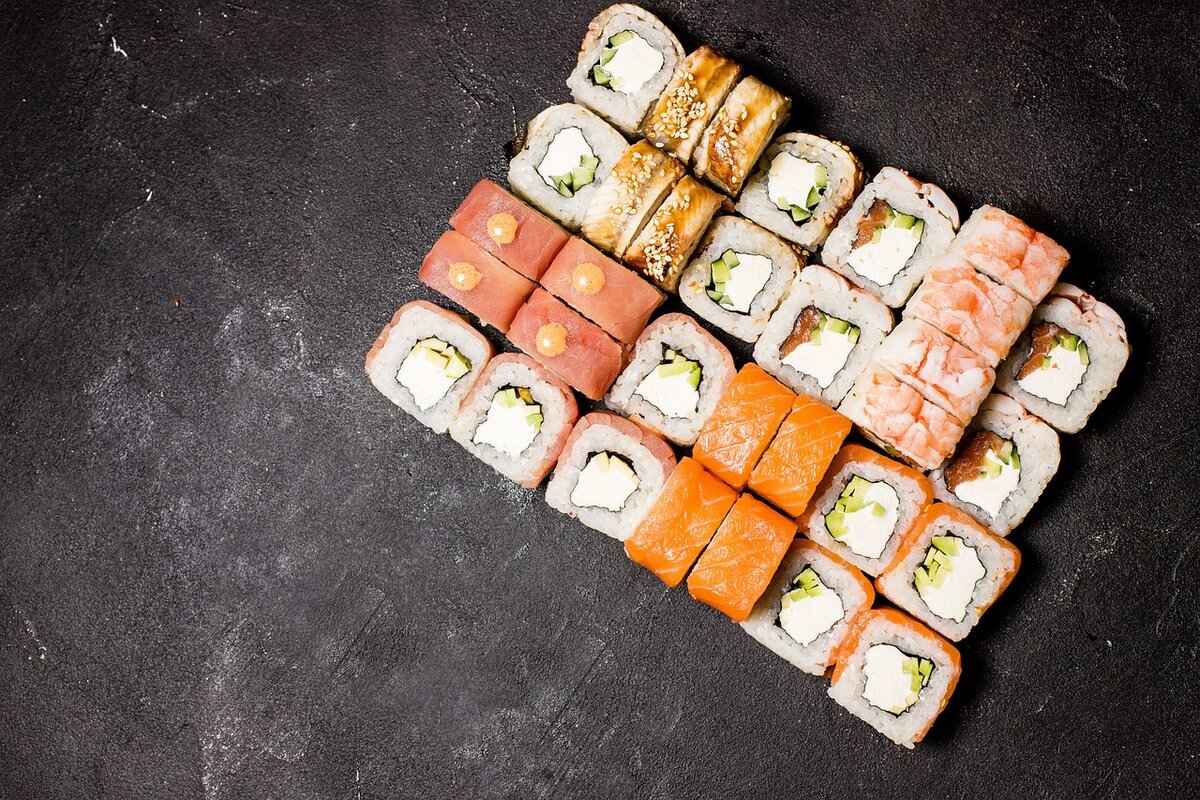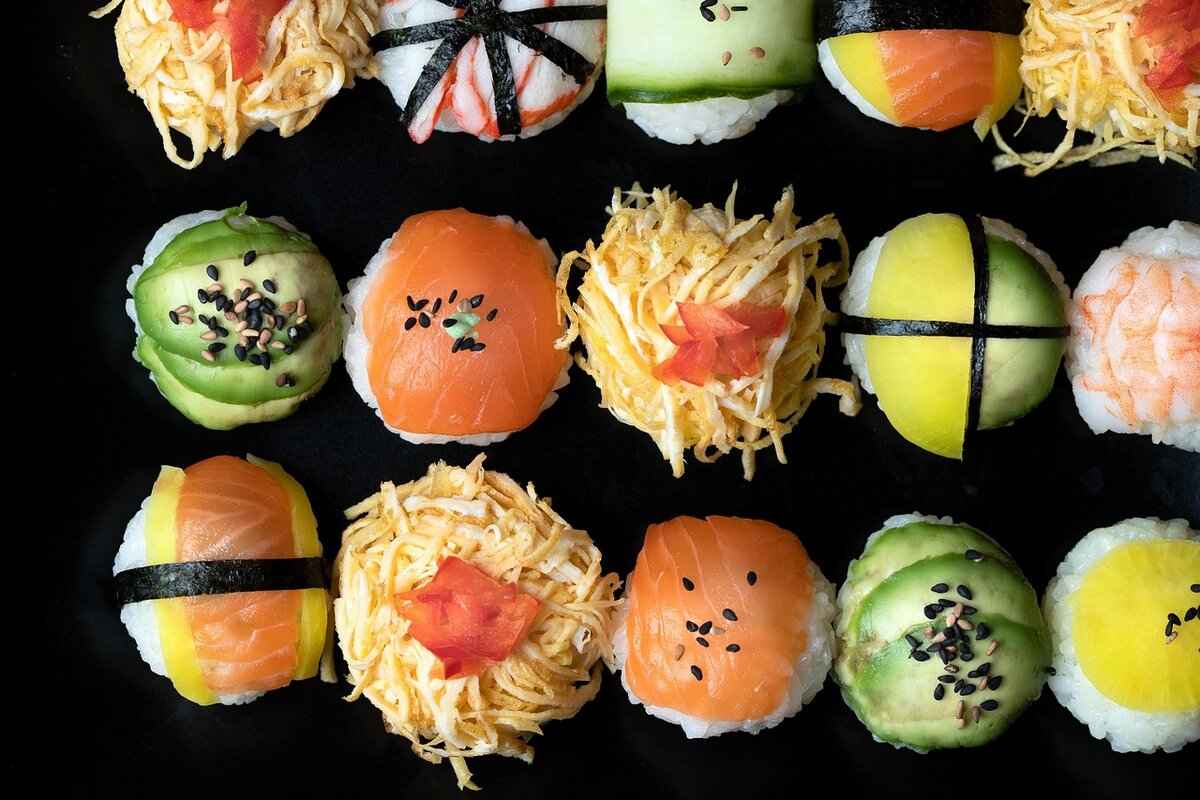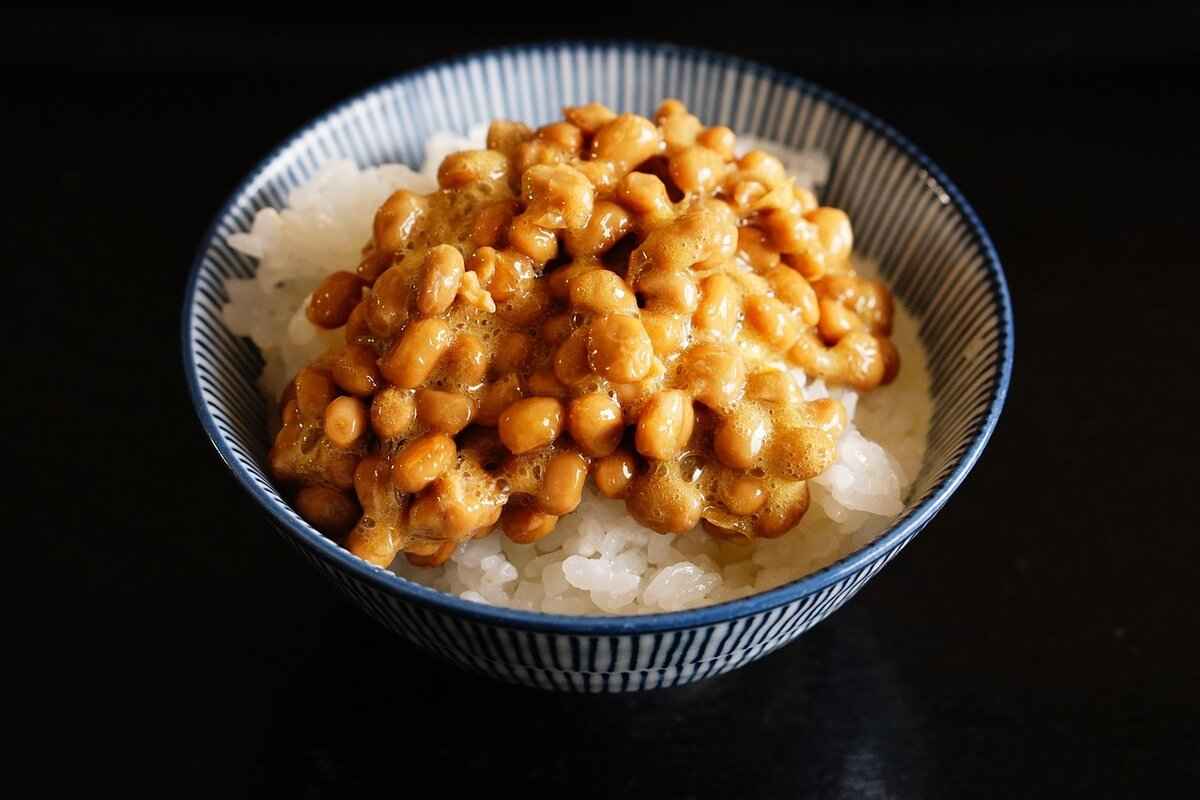Japanese cuisine is a culinary art form that transcends mere sustenance, embodying a deep cultural significance and a rich historical background. This article delves into the intricate layers of Japanese food culture, examining its traditional roots, the exquisite art of sushi, and the diverse culinary practices that make it globally cherished.
At its core, Japanese cuisine is defined by its emphasis on seasonality, freshness, and meticulous presentation. The philosophy of “umami,” often referred to as the fifth taste, plays a pivotal role in creating a harmonious balance of flavors. Ingredients are carefully selected based on the seasons, leading to dishes that are not only delicious but also visually stunning.
The journey of Japanese cuisine is marked by significant historical events and cultural exchanges. From the introduction of rice cultivation in ancient times to the culinary influences brought by trade and Westernization during the Meiji Restoration, Japanese food has evolved while retaining its traditional essence. This adaptability has allowed it to incorporate various ingredients and cooking techniques, enriching its culinary landscape.
Japan’s culinary history is a tapestry woven with various influences:
- The Introduction of Rice: Rice, a staple in Japanese diets, symbolizes prosperity and is central to numerous traditional dishes.
- Buddhism’s Influence: The arrival of Buddhism introduced vegetarianism, giving rise to shojin ryori, a plant-based cuisine that emphasizes balance and harmony.
- Western Influence: The Meiji Restoration brought Western culinary practices, leading to a fusion of flavors and techniques.
Sushi stands out as a quintessential element of Japanese cuisine, celebrated for its artistry and precision. It symbolizes the delicate balance between flavor and aesthetic presentation, a core principle in Japanese cooking.
There are several varieties of sushi, each with its unique preparation methods and ingredients:
- Nigiri: Hand-formed rice topped with slices of fish or seafood.
- Maki: Rolled sushi with rice and fillings wrapped in seaweed.
- Sashimi: Freshly sliced raw fish served without rice.
The art of sushi making requires years of dedication and skill. Key techniques include:
- Rice Preparation: Achieving the perfect texture and flavor of sushi rice.
- Fish Selection: Choosing the freshest and highest quality fish.
- Knife Skills: Mastering the precise cuts for optimal presentation.
Beyond sushi, Japanese cuisine encompasses a wide range of dishes, each showcasing the country’s culinary diversity:
- Ramen: A beloved noodle soup with regional variations.
- Tempura: Lightly battered and fried vegetables or seafood.
- Kaiseki: A multi-course dining experience highlighting seasonal ingredients.
In Japanese cuisine, presentation is integral, reflecting cultural values of harmony and respect for nature. Dishes are crafted to evoke the beauty of the seasons, utilizing colors and arrangements that connect the food with its environment.
The choice of tableware in Japanese dining significantly impacts the overall experience. Each dish is served on thoughtfully selected plates that complement the food’s colors and textures, enhancing both visual appeal and cultural significance.
In conclusion, Japanese cuisine is a profound reflection of the country’s culture, history, and artistry. From the delicate craftsmanship of sushi to the seasonal aesthetics of kaiseki, the culinary landscape of Japan offers a rich and diverse experience that continues to captivate food lovers around the world.

What is Japanese Cuisine?
Japanese cuisine is a remarkable culinary tradition that has captivated the palates of food enthusiasts around the globe. At its core, it is defined by a deep respect for seasonality, an unwavering commitment to freshness, and an emphasis on aesthetic presentation. These principles not only enhance the dining experience but also reflect the rich cultural heritage of Japan.
Japanese cuisine is characterized by its use of high-quality ingredients, often sourced locally and prepared in a way that highlights their natural flavors. The philosophy of umami, often referred to as the ‘fifth taste’, plays a crucial role in Japanese cooking, emphasizing the savory depth that can be achieved through the careful selection of ingredients.
Seasonality is a cornerstone of Japanese cuisine. Each dish is often crafted to reflect the changing seasons, utilizing ingredients that are at their peak freshness. This practice not only ensures the best flavors but also creates a visual feast that mirrors the beauty of nature. For instance, sakura (cherry blossom) is celebrated in spring, inspiring dishes that incorporate its delicate flavor and vibrant color.
The presentation of food in Japanese cuisine is an art form in itself. Dishes are arranged with great care, often resembling a work of art. The use of color, shape, and texture is meticulously considered to create a harmonious balance. This attention to detail is evident in traditional meals like kaiseki, where each course is designed to provide not only taste but also visual delight.
Over the centuries, Japanese cuisine has evolved significantly, influenced by various historical events and cultural exchanges. The introduction of rice cultivation, for example, transformed the dietary habits of the Japanese people. Likewise, the influence of Buddhism led to the development of shojin ryori, a vegetarian cuisine that emphasizes balance and harmony.
- Rice: The staple food of Japan, symbolizing prosperity and purity.
- Fish: Fresh seafood is a vital part of the diet, often prepared as sushi or sashimi.
- Vegetables: Seasonal vegetables are commonly used, often pickled or served in various forms.
- Fermented Foods: Ingredients like miso and soy sauce add depth and flavor to many dishes.
Fermentation is a vital aspect of Japanese cooking, contributing to the unique flavors and health benefits of many traditional dishes. Foods like kimchi and nattō are examples of how fermentation enhances taste while also providing nutritional benefits.
In recent decades, Japanese cuisine has embraced influences from around the world, leading to innovative fusion dishes that combine traditional techniques with international flavors. This evolution reflects the dynamic nature of food culture in Japan, where chefs continually experiment while respecting their culinary roots.
As the world becomes increasingly interconnected, Japanese cuisine is likely to continue evolving. Chefs are exploring new ingredients and techniques while maintaining a strong connection to tradition. This balance of innovation and heritage ensures that Japanese cuisine remains relevant and exciting for future generations.

How Has Japanese Cuisine Evolved Over Time?
Japanese cuisine is a vibrant tapestry woven from centuries of history, cultural exchanges, and culinary innovations. The evolution of this cuisine is not merely a timeline of changes but a reflection of Japan’s journey through time, showcasing how external influences and internal traditions have shaped its culinary landscape.
The evolution of Japanese cuisine has been significantly influenced by historical events, trade relationships, and cultural exchanges. This dynamic interplay has led to the incorporation of diverse ingredients and cooking methods while still maintaining traditional practices that are deeply rooted in Japanese culture.
Japan’s culinary history can be traced back to ancient times, with rice cultivation being a pivotal moment. The introduction of rice as a staple food not only transformed diets but also became a symbol of prosperity and purity. Rice is central to many traditional dishes, including sushi, onigiri, and donburi.
- Influence of Buddhism: The arrival of Buddhism in Japan brought with it a wave of vegetarianism, leading to the development of shojin ryori, a cuisine focused on plant-based ingredients that emphasizes harmony and balance in meals.
- Western Influence: The Meiji Restoration marked a significant turning point, as Japan opened its doors to the West, resulting in the incorporation of Western cooking techniques and ingredients.
In recent decades, Japanese cuisine has embraced globalization. This has led to the emergence of fusion dishes that blend traditional Japanese flavors with international influences. While this evolution introduces new ingredients, it also highlights the resilience of traditional cooking methods that have been passed down through generations.
Sushi is perhaps the most recognized element of Japanese cuisine, celebrated for its artistry and precision. It symbolizes the harmony between flavor and presentation that defines Japanese culinary philosophy.
There are various types of sushi, each with distinct ingredients and preparation methods:
- Nigiri: Hand-formed rice topped with a slice of fish.
- Maki: Rolled sushi, often filled with vegetables or seafood.
- Sashimi: Thinly sliced raw fish served without rice.
Making sushi is an intricate skill requiring years of training. Sushi chefs focus on techniques such as rice preparation, fish selection, and knife skills to achieve the perfect balance of flavors and textures, making it a true culinary art form.
Beyond sushi, Japanese cuisine encompasses a vast array of dishes and cooking styles, including ramen, tempura, and kaiseki. Each of these reflects the country’s culinary diversity and regional specialties.
Ramen, a popular noodle soup, has gained international acclaim. With various regional styles and flavors, ramen showcases local ingredients and culinary traditions, making it a comfort food favorite both in Japan and worldwide.
Kaiseki is a traditional multi-course dining experience that emphasizes seasonal ingredients and meticulous presentation. This dining style showcases the art of Japanese cooking at its finest, offering a harmonious balance of flavors and textures.
In Japanese cuisine, presentation is not merely aesthetic; it reflects cultural values of harmony and respect for nature. The visual appeal of a dish enhances the dining experience, creating a connection between the food and its environment.
Japanese dishes are often designed to reflect the seasons. The use of colors, shapes, and arrangements evokes the beauty of nature, allowing diners to appreciate the artistry behind each meal.
The choice of tableware in Japanese cuisine is crucial. Each dish is served on carefully selected plates that complement the food’s presentation and cultural significance, enhancing the overall dining experience.
Historical Influences on Japanese Food
Japan’s culinary history is a fascinating journey shaped by various significant factors that have influenced its food culture over centuries. Understanding these influences provides insight into the unique flavors and techniques that define Japanese cuisine today.
The introduction of rice cultivation in Japan, dating back to around 300 BC, marked a pivotal moment in the country’s culinary evolution. Rice is not just a staple food; it symbolizes prosperity and purity, deeply embedded in the Japanese way of life. Traditional dishes, such as sushi, onigiri, and donburi, revolve around rice, showcasing its central role in meals.
The arrival of Buddhism in the 6th century introduced new dietary practices, notably vegetarianism, which significantly influenced Japanese cuisine. The development of shojin ryori, a plant-based cuisine focused on seasonal vegetables, reflects the Buddhist principles of harmony and balance. This culinary style emphasizes the use of fresh ingredients, meticulous preparation, and an aesthetic presentation, aligning with the spiritual values of Buddhism.
The Meiji Restoration in the late 19th century was a transformative period for Japan, leading to the opening of the country to Western influences. This era saw the introduction of various cooking techniques and ingredients, which were adapted into Japanese culinary practices. Dishes such as curry rice, hamburg steak, and spaghetti became popular, showcasing a fusion of Western and Japanese flavors. The adaptation of Western cuisine did not erase traditional practices; instead, it enriched the culinary landscape, leading to innovative dishes that are now staples in modern Japanese cuisine.
Seasonality is a fundamental aspect of Japanese cooking, deeply rooted in the cultural appreciation of nature. Dishes are often prepared with ingredients that reflect the current season, enhancing both flavor and presentation. This practice not only promotes sustainability but also allows for a dynamic culinary experience that changes throughout the year. For example, cherry blossompumpkin dishes in autumn highlight the seasonal bounty.
Japanese cuisine is a reflection of the country’s cultural values, emphasizing harmony, balance, and respect for nature. Every meal is an art form, where the arrangement of food is as important as its taste. This attention to detail extends to the selection of tableware, which is chosen to enhance the visual appeal of the meal. The Japanese believe that the dining experience should engage all senses, creating a profound connection between the food and its environment.
- The introduction of rice cultivation established the foundation of Japanese cuisine.
- Buddhism brought vegetarianism and a focus on seasonal ingredients.
- The Meiji Restoration facilitated the integration of Western culinary techniques.
- Seasonal eating enhances the flavor and presentation of dishes.
- Cultural values are reflected in the aesthetics and preparation of food.
In conclusion, the historical influences on Japanese food are vast and multifaceted, weaving together a rich tapestry of flavors, techniques, and cultural significance. From the ancient practices of rice cultivation to the modern adaptations of Western cuisine, each element contributes to the vibrant culinary landscape that Japan is known for today.
The Role of Rice in Japanese Cuisine
Rice holds a profound significance in Japanese cuisine, serving not only as a staple food but also as a cultural symbol of prosperity and purity. It is integral to numerous traditional dishes, including sushi, onigiri, and donburi, each illustrating the versatility and importance of rice in Japanese culinary practices.
In Japan, rice is more than just a food item; it embodies the essence of life and sustenance. The Japanese word for rice, “gohan,” translates to “meal,” highlighting its central role in daily dining. This staple grain is often served with every meal, reinforcing its status as the foundation of Japanese cuisine.
The cultivation of rice in Japan dates back over 2,000 years, deeply intertwined with the nation’s agricultural practices and societal development. The introduction of wet-rice farming techniques has shaped not only the landscape but also the cultural identity of the Japanese people. Festivals and rituals, such as the rice planting ceremony, celebrate this vital crop, showcasing its importance in Japanese culture.
Rice is a key ingredient in many traditional Japanese dishes:
- Sushi: Perhaps the most famous rice dish, sushi combines vinegared rice with various toppings, including seafood and vegetables, creating a harmonious balance of flavors.
- Onigiri: These rice balls, often wrapped in seaweed and filled with ingredients like pickled plum or salmon, are a popular snack and symbolize comfort and home.
- Donburi: A rice bowl dish topped with an array of ingredients, donburi exemplifies the versatility of rice in accommodating different flavors and textures.
The preparation of rice is considered an art form in Japan. The process begins with selecting high-quality rice, often Japonica varieties known for their sticky texture. The rice is rinsed multiple times to remove excess starch, then soaked to achieve the perfect texture. Cooking methods vary, but the use of a traditional rice cooker or a pot on the stove is common.
Once cooked, rice is typically served in a small bowl, allowing diners to enjoy it alongside various side dishes, enhancing the overall dining experience.
Rice is deeply embedded in Japanese culture, symbolizing not just sustenance but also spirituality and community. It is featured in numerous cultural rituals, such as weddings and festivals, signifying blessings and good fortune. The phrase “kome wa shiawase”, meaning “rice is happiness,” reflects the cultural belief in rice as a source of joy and prosperity.
While rice remains a staple, modern Japanese cuisine has seen innovations that incorporate rice into various dishes, including fusion cuisine. Chefs experiment with rice in new forms, such as rice burgers and sushi burritos, appealing to contemporary tastes while respecting traditional roots.
In conclusion, rice is not merely a food item in Japan; it is a vital component of the nation’s culinary identity, reflecting a rich history and cultural significance. As Japan continues to evolve, rice will undoubtedly remain at the heart of its cuisine, bridging the past with the future.
Impact of Buddhism on Japanese Cooking
In understanding the , it is essential to recognize how this ancient philosophy has shaped culinary practices over centuries. Buddhism, which arrived in Japan in the 6th century, brought with it not only spiritual teachings but also a profound influence on dietary habits, particularly the embrace of vegetarianism.
The introduction of Buddhism led to a significant shift in the Japanese diet, particularly with the promotion of vegetarianism. This dietary change was rooted in the Buddhist principle of ahimsa, or non-violence, which advocates for compassion towards all living beings. As a result, many monks and followers adopted a meat-free diet, which in turn influenced the broader population.
One of the most notable outcomes of this vegetarian movement is the development of shojin ryori, a traditional Japanese cuisine that emphasizes plant-based ingredients. Shojin ryori is not merely a collection of vegetarian dishes; it is a culinary philosophy that seeks to create harmony and balance in meals. The ingredients used in shojin ryori are often seasonal, reflecting the changing nature of the environment.
- Seasonality: Dishes are prepared using fresh, seasonal vegetables, grains, and legumes.
- Flavor Balance: The cuisine aims for a harmonious balance of flavors, textures, and colors, enhancing the overall dining experience.
- Presentation: Attention to detail in presentation is paramount, with dishes arranged to reflect the beauty of nature.
- Mindfulness: Each meal is prepared and consumed with mindfulness, embodying the essence of Buddhist teachings.
Shojin ryori is deeply intertwined with Buddhist practices, as it is often served during temple ceremonies and festivals. The meals are designed to be simple yet elegant, mirroring the principles of moderation and simplicity found in Buddhist teachings. By focusing on vegetarian ingredients, shojin ryori encourages respect for life and promotes a sustainable approach to eating.
In contemporary Japan, shojin ryori has gained popularity beyond religious settings, appealing to a broader audience interested in healthy, plant-based diets. Many restaurants now offer shojin ryori as part of their menus, attracting both locals and tourists. This evolution reflects a growing awareness of health and environmental issues, aligning with global trends towards vegetarianism and veganism.
The influence of Buddhism on Japanese cooking, particularly through the lens of shojin ryori, showcases a unique blend of spirituality and culinary art. By embracing vegetarianism and the principles of harmony and balance, shojin ryori not only provides nourishment but also fosters a deeper connection to nature and mindfulness in eating. As this tradition continues to evolve, it remains a testament to the enduring legacy of Buddhist teachings in shaping Japanese culinary culture.
Modern Influences and Globalization
In recent years, Japanese cuisine has undergone a remarkable transformation, largely influenced by the forces of globalization. This evolution has led to the emergence of fusion dishes that blend traditional Japanese flavors with international culinary practices. As a result, contemporary Japanese cuisine not only honors its rich heritage but also embraces the diverse influences that come from around the world.
The impact of globalization on Japanese cuisine can be seen in various aspects, from the ingredients used to the cooking techniques employed. Many chefs are now experimenting with non-traditional ingredients and methods, leading to innovative dishes that appeal to a broader audience. For instance, the incorporation of Mexican spices or Italian cheeses into traditional Japanese recipes is becoming increasingly common.
- Ramen Tacos: A creative twist that combines the beloved Japanese noodle soup with the handheld convenience of tacos.
- Sushi Burritos: A fusion of sushi and burritos, offering a portable option filled with fresh ingredients.
- Matcha Desserts: The use of matcha in cakes, ice creams, and pastries, merging Japanese flavors with Western sweets.
These fusion dishes not only showcase the versatility of Japanese cuisine but also highlight the creativity of modern chefs who are eager to explore and innovate.
Despite the influx of global influences, many chefs and home cooks remain committed to traditional Japanese cooking methods. Techniques such as tempura frying, fermentation, and grilling are still widely practiced, ensuring that the essence of Japanese cuisine is preserved. Chefs often seek to strike a balance between innovation and tradition, creating dishes that respect the past while looking towards the future.
Another hallmark of Japanese cuisine is its focus on seasonal ingredients. This principle remains intact even as new flavors are introduced. Chefs often incorporate seasonal produce into their fusion dishes, ensuring that they not only taste good but also reflect the changing seasons. For example, a summer dish might feature fresh tomatoes and cucumbers, while a winter dish may highlight root vegetables and warming spices.
The globalization of Japanese cuisine has also led to an increased interest in Japanese food culture worldwide. As more people travel to Japan, they return home with a newfound appreciation for its culinary traditions. This has sparked a demand for authentic Japanese dining experiences, as well as a curiosity for fusion interpretations that cater to local tastes.
Looking ahead, the future of Japanese cuisine seems bright. As chefs continue to innovate and experiment, we can expect to see even more exciting fusion dishes that challenge our perceptions of traditional Japanese food. However, the key will be to maintain a strong connection to the core principles of seasonality, freshness, and presentation that define this beloved culinary tradition.
In conclusion, the interplay between tradition and globalization has created a dynamic landscape for Japanese cuisine. While the incorporation of international flavors and fusion dishes has enriched the culinary scene, the commitment to traditional cooking methods ensures that the essence of Japanese food culture remains intact.

What is Sushi and Its Cultural Significance?
Sushi is not just a dish; it is a cultural phenomenon that embodies the essence of Japanese culinary tradition. As a staple of Japanese cuisine, sushi has transcended its origins to become a global favorite, celebrated for its unique flavors and artistic presentation. This article will explore the significance of sushi within Japanese culture, its various forms, and the meticulous artistry involved in its preparation.
Sushi is characterized by its combination of vinegared rice and various ingredients, including seafood, vegetables, and occasionally tropical fruits. The key elements that set sushi apart are:
- Freshness: The quality of the ingredients is paramount, with sushi chefs often sourcing the freshest fish and produce available.
- Technique: Sushi making is an art form that requires years of training to master the intricate techniques involved.
- Aesthetic Presentation: The visual appeal of sushi is as important as its flavor, reflecting the Japanese philosophy of beauty in simplicity.
There are several types of sushi, each offering a unique culinary experience:
- Nigiri: A hand-formed mound of rice topped with a slice of fish or seafood.
- Maki: Rolled sushi, typically filled with fish, vegetables, and rice, wrapped in seaweed.
- Sashimi: Thinly sliced raw fish served without rice, focusing purely on the flavor of the fish.
Each type showcases the versatility and creativity of sushi chefs, allowing for a wide range of flavors and textures.
The preparation of sushi is a meticulous process that requires a deep understanding of ingredients and techniques. Sushi chefs, known as sushi itamae, often undergo rigorous training that can last for many years. They learn the nuances of:
- Rice Preparation: The rice must be cooked to perfection, seasoned with vinegar, sugar, and salt to achieve the ideal flavor and texture.
- Fish Selection: Choosing the right type of fish is crucial, as it affects the overall taste and quality of the sushi.
- Knife Skills: The way fish is sliced can dramatically change the dining experience, with precision cuts enhancing the flavors.
Sushi is deeply embedded in Japanese culture, representing more than just food. It embodies the principles of seasonality and harmony, reflecting the natural beauty of Japan. Sushi is often enjoyed during special occasions and celebrations, symbolizing prosperity and good fortune.
Moreover, sushi has evolved to incorporate regional ingredients, showcasing the diversity of Japan’s culinary landscape. Each region offers its unique twist on sushi, influenced by local flavors and traditions.
In recent decades, sushi has gained immense popularity worldwide, leading to the emergence of various fusion styles. From sushi burritos to sushi pizzas, chefs around the globe have embraced sushi’s core principles while adding their regional flair. This globalization has, however, sparked discussions about authenticity and the preservation of traditional sushi-making techniques.
In conclusion, sushi is a remarkable representation of Japanese culture, combining artistry, tradition, and flavor. Its significance extends beyond the plate, embodying values of respect for nature and the importance of seasonal ingredients. As sushi continues to evolve and adapt, it remains a beloved culinary art form that transcends borders and unites people through the shared experience of food.
Types of Sushi: A Culinary Exploration
When it comes to the world of sushi, the variety is as rich and diverse as the culture from which it originates. Sushi is not merely a dish; it is an art form that reflects the meticulous nature of Japanese culinary practices. Understanding the different types of sushi can enhance your appreciation for this beloved cuisine.
Sushi can be categorized into several types, each with its own unique preparation methods and ingredients. Here are some of the most popular forms:
- Nigiri: This type consists of a small mound of sushi rice topped with a slice of fish or seafood. The simplicity of nigiri highlights the quality of the ingredients, making it a favorite among sushi enthusiasts.
- Maki: Maki sushi is rolled sushi, typically wrapped in seaweed (nori) and filled with various ingredients such as fish, vegetables, and rice. It comes in different forms, including hosomaki (thin rolls) and uramaki (inside-out rolls).
- Sashimi: While not technically sushi, sashimi is often included in sushi menus. It consists of thinly sliced raw fish served without rice, emphasizing the freshness and flavor of the fish.
- Temaki: Also known as hand rolls, temaki are cone-shaped rolls filled with sushi rice and various ingredients. They are meant to be eaten with hands, providing a casual and interactive dining experience.
- Chirashi: This is a scattered sushi bowl, featuring a bed of sushi rice topped with a variety of sashimi and garnishes. Chirashi showcases the chef’s creativity and is a colorful representation of sushi.
The preparation methods vary significantly among the different sushi types:
| Type of Sushi | Preparation Method | Key Ingredients |
|---|---|---|
| Nigiri | Hand-formed rice topped with fish or seafood | Sushi rice, fresh fish |
| Maki | Rolled with a bamboo mat | Nori, sushi rice, fillings |
| Sashimi | Sliced raw fish served alone | Fresh fish |
| Temaki | Rolled by hand into a cone shape | Nori, sushi rice, various fillings |
| Chirashi | Layered in a bowl | Sushi rice, assorted sashimi |
The global appeal of sushi can be attributed to its freshness, variety, and the artistry involved in its preparation. Sushi restaurants have proliferated around the world, adapting traditional recipes to local tastes while maintaining the essence of Japanese cuisine. The emphasis on fresh ingredients and the aesthetic presentation have also contributed to its popularity.
Moreover, sushi’s versatility allows for endless customization, catering to various dietary preferences, including vegetarian and gluten-free options. As more people become aware of the health benefits associated with sushi, such as its high omega-3 content and low-calorie nature, its popularity continues to grow.
In summary, sushi is more than just a meal; it is a culinary experience that invites exploration and appreciation. Whether you are a seasoned sushi lover or a newcomer, understanding the different types of sushi can enhance your dining experience and deepen your connection to this extraordinary aspect of Japanese culture.
The Art of Sushi Making
The art of sushi making is a highly revered skill within Japanese cuisine, reflecting a deep cultural heritage and a commitment to culinary excellence. It encompasses a variety of techniques that must be mastered over years of practice. From the meticulous preparation of sushi rice to the careful selection of fresh fish, each step in the process is crucial for achieving the perfect balance of flavors and textures.
At the heart of sushi lies the rice, known as shari or sushi-meshi. The preparation of this rice is an art in itself. It must be cooked to perfection, with the right amount of moisture and stickiness to hold its shape when molded. The rice is typically seasoned with a mixture of rice vinegar, sugar, and salt, which adds a subtle flavor that complements the fish. Mastering the rice-making process is essential for any aspiring sushi chef, as it serves as the foundation for all sushi dishes.
Another critical aspect of sushi making is the selection of ingredients. Freshness is paramount; sushi chefs often source their fish from local markets or directly from fishermen. Popular choices include tuna, salmon, and mackerel, each offering distinct flavors and textures. Additionally, the use of seasonal ingredients can elevate the dish, allowing chefs to showcase the natural beauty and taste of the season.
Knife skills are an integral part of sushi making. The chef must wield a specialized sushi knife, known as a yanagiba, to slice fish with precision. The technique involves a single, smooth motion to ensure clean cuts, which not only enhances the presentation but also preserves the integrity of the fish. Learning to handle a knife properly requires significant training and practice, as the right technique can make all the difference in the final dish.
Sushi comes in various forms, each with unique preparation methods. Some of the most popular types include:
- Nigiri: Hand-formed rice topped with a slice of fish.
- Maki: Rolled sushi wrapped in seaweed, often filled with vegetables or fish.
- Sashimi: Thinly sliced raw fish served without rice.
Each type requires specific techniques and presentations, showcasing the chef’s creativity and skill.
In Japanese culture, presentation is as important as taste. Sushi is often served on beautifully crafted plates that enhance its visual appeal. The arrangement of the sushi, the choice of colors, and the use of garnishes all contribute to a dining experience that is both aesthetic and sensory. A well-presented plate reflects the chef’s respect for the ingredients and the dining experience.
For many sushi chefs, the journey of mastering sushi making is a lifelong pursuit. The dedication to perfecting techniques, sourcing the best ingredients, and understanding the nuances of flavor and presentation requires not just skill, but also passion. Each chef brings their own creativity to the craft, making sushi making a dynamic and evolving art form.
In conclusion, the art of sushi making is a harmonious blend of tradition, skill, and creativity. It requires years of training and a deep appreciation for the ingredients and techniques involved. As sushi continues to gain popularity worldwide, the respect for this culinary art form remains steadfast, inviting both chefs and enthusiasts to explore its rich complexities.

What Are Other Key Elements of Japanese Cuisine?
Japanese cuisine is a treasure trove of flavors, techniques, and culinary traditions that extend far beyond the well-known sushi. Each dish tells a story, reflecting the rich cultural heritage and regional diversity of Japan. From savory noodle soups to delicate multi-course meals, the array of dishes available is a testament to the nation’s culinary prowess.
While sushi often steals the spotlight, there are numerous other dishes that form the backbone of Japanese dining. These include:
- Ramen: A beloved noodle soup that varies widely across regions, ramen is a comfort food staple. Each bowl is a unique combination of rich broth, tender noodles, and an array of toppings, such as chashu (braised pork), green onions, and nori (seaweed).
- Tempura: This dish features seafood or vegetables that are lightly battered and deep-fried to achieve a crispy texture. Originating from Portuguese cooking methods, tempura has become an integral part of Japanese cuisine, often served with a dipping sauce.
- Kaiseki: A traditional multi-course meal, kaiseki showcases seasonal ingredients and the chef’s artistry. Each course is meticulously prepared and presented, reflecting the harmony and balance that is central to Japanese culinary philosophy.
- Okonomiyaki: Often described as a Japanese savory pancake, okonomiyaki is made with a batter of flour, eggs, and shredded cabbage, topped with various ingredients such as meat, seafood, and sauces. This dish is particularly popular in Hiroshima and Osaka.
- Donburi: A rice bowl dish that features various toppings such as tempura, grilled meat, or vegetables served on a bed of rice. Donburi is a versatile meal that can be customized to suit different tastes and preferences.
Japan’s geography and climate play a significant role in shaping its culinary landscape. Different regions boast unique ingredients and cooking styles, influenced by local traditions and available resources. For instance:
- Hokkaido: Known for its seafood, Hokkaido offers dishes like sea urchin sushi and crab hot pot, highlighting the region’s rich maritime bounty.
- Kyoto: Renowned for its kaiseki dining, Kyoto emphasizes seasonal vegetables and delicate flavors, often using techniques that enhance the natural taste of ingredients.
- Okinawa: This southern island features a unique cuisine that incorporates tropical ingredients and influences from Chinese and Southeast Asian cooking, resulting in dishes like Okinawa soba.
Seasonality is a cornerstone of Japanese cooking, affecting not only the ingredients used but also the presentation and dining experience. Japanese chefs take great care to ensure that their dishes reflect the changing seasons, using colors, shapes, and arrangements that evoke the beauty of nature.
For example, in spring, dishes may feature cherry blossoms or fresh greens, while autumn might bring an emphasis on earthy tones and flavors like chestnuts and mushrooms. This deep connection to nature enhances the overall dining experience, allowing diners to appreciate the beauty of each season through food.
In Japanese cuisine, presentation is not merely an afterthought; it is an integral part of the culinary experience. Attention to detail in plating reflects a deep respect for the ingredients and the dining experience itself. Each dish is often served on carefully chosen tableware that complements its colors and textures, creating a harmonious visual appeal.
This emphasis on aesthetics fosters a deeper appreciation for the meal, encouraging diners to engage all their senses. The combination of beautiful presentation, seasonal ingredients, and thoughtful preparation creates a memorable dining experience that is uniquely Japanese.
Exploring Ramen: A Comfort Food Favorite
Ramen is much more than just a bowl of noodles; it represents a significant aspect of Japanese cuisine that has captured the hearts and palates of food lovers around the world. This beloved dish, originally from China, has evolved into various regional styles, each showcasing unique flavors and ingredients that reflect local culinary traditions.
At its core, ramen is a noodle soup characterized by its rich broth, which can be made from various bases such as pork, chicken, or seafood. The complexity of the broth is what often distinguishes one bowl of ramen from another. Many ramen shops pride themselves on using slow-cooked stocks that are simmered for hours to extract deep, flavorful notes. The noodles themselves can vary in thickness and texture, often made fresh daily to ensure the perfect bite.
- Shoyu Ramen: This soy sauce-based broth is a staple in Tokyo and is known for its savory and slightly sweet flavor.
- Miso Ramen: Originating from Hokkaido, this type features a rich miso-based broth, often combined with corn, butter, and other toppings.
- Shio Ramen: This salt-based broth is lighter and often highlights the natural flavors of the ingredients.
- Tonktotsu Ramen: Made from pork bones, this creamy and rich broth is a specialty of Fukuoka and has gained immense popularity.
The beauty of ramen lies in its versatility. Key components include:
- Noodles: Typically made from wheat flour, water, salt, and kansui (an alkaline mineral water), giving them their unique chewiness.
- Broth: The heart of ramen, which can be flavored with various ingredients such as garlic, ginger, and scallions.
- Toppings: Common garnishes include sliced pork (chashu), green onions, soft-boiled eggs, nori (seaweed), and menma (bamboo shoots).
Ramen is not just a meal; it embodies the spirit of Japanese culture. It reflects the country’s ability to adapt and innovate, blending traditional techniques with modern influences. Street vendors and ramen shops have become cultural icons, often serving as community hubs where people gather to enjoy a comforting bowl of soup.
In recent years, ramen has surged in popularity globally, becoming a symbol of comfort food. It has inspired countless restaurants and food trucks, and even ramen-themed festivals. Additionally, ramen’s presence in popular media, such as anime and films, has further solidified its status as a beloved dish.
When enjoying ramen, it’s essential to embrace the experience fully. Slurping the noodles is not only acceptable but encouraged, as it enhances the flavor and indicates enjoyment. Pairing ramen with a side of gyoza or a refreshing salad can create a well-rounded meal.
In conclusion, ramen stands as a testament to the rich culinary landscape of Japan. Its diversity, depth of flavor, and cultural significance make it a dish that transcends borders, inviting everyone to experience the warmth and comfort it offers. Whether you savor it in a traditional ramen shop in Japan or a trendy eatery in your hometown, ramen is sure to delight your taste buds.
The Delicacy of Kaiseki Cuisine
is a culinary journey that embodies the essence of Japanese tradition. This exquisite dining experience is not merely a meal; it is an art form that showcases the meticulous craftsmanship of Japanese chefs. Originating from the Japanese tea ceremony, kaiseki has evolved into a sophisticated multi-course meal that emphasizes seasonal ingredients, intricate presentation, and a harmonious balance of flavors.
Kaiseki stands out in the realm of Japanese cuisine due to its seasonal focus. Each dish is carefully crafted to reflect the ingredients that are at their peak during a particular time of year. Chefs take great pride in selecting the freshest produce, seafood, and meats, ensuring that every bite is a celebration of the season. This dedication to seasonality not only enhances flavor but also connects diners to the natural world.
A traditional kaiseki meal typically consists of multiple courses, each designed to engage the senses. The courses usually include:
- Sakizuke: An appetizer that sets the tone for the meal.
- Shokuji: A series of small dishes that highlight seasonal ingredients.
- Owan: A soup course, often featuring delicate flavors.
- Naka-choko: A refreshing dish, usually served mid-meal to cleanse the palate.
- Yaki: Grilled dishes that showcase the chef’s skill.
- Gohan: Rice served with pickles, a staple in Japanese meals.
- Desert: A sweet course that concludes the dining experience.
In kaiseki, presentation is as important as flavor. Each dish is meticulously arranged to create a visual feast that reflects the beauty of nature. The use of seasonal colors, textures, and shapes transforms the meal into an artistic expression. Plates and utensils are chosen to complement the food, enhancing the overall dining experience.
Kaiseki cuisine embodies the principles of wa (harmony), kei (respect), and sei (purity), which are fundamental to Japanese culture. The careful selection of ingredients and the artistry involved in preparation reflect a deep respect for nature and the environment. Moreover, the dining experience is often accompanied by traditional Japanese tea, further enhancing the cultural significance of the meal.
While kaiseki is traditionally enjoyed in specialized restaurants, it can also be experienced at ryokan (Japanese inns) and during special events. Many chefs offer personalized kaiseki experiences, allowing diners to immerse themselves in this culinary art form.
In conclusion, kaiseki cuisine is a remarkable representation of Japanese culinary tradition, characterized by its seasonal ingredients, meticulous presentation, and cultural significance. It invites diners to appreciate not only the flavors but also the artistry and philosophy behind each dish, making it a truly unique dining experience.

Why is Presentation Important in Japanese Cuisine?
In Japanese cuisine, presentation transcends mere aesthetics; it embodies deep cultural values that emphasize harmony and a profound respect for nature. The visual appeal of a dish is not just about how it looks but also about how it engages the senses and enhances the overall dining experience. Each element is carefully considered to create a dish that is as beautiful as it is delicious.
What Role Does Aesthetics Play in Japanese Dining?
Japanese culinary presentation is a reflection of the seasons, utilizing vibrant colors and natural shapes to create a visual feast. Dishes are often arranged to mimic the beauty of nature, such as the way cherry blossoms bloom in spring or the serene stillness of a winter landscape. This attention to detail is not only for visual appeal but also serves to evoke emotions and create a deeper connection between the diner and the meal.
How Does Seasonality Influence Presentation?
Seasonality is a cornerstone of Japanese cuisine, influencing not just the ingredients used but also the way dishes are presented. For instance, in spring, dishes may feature light colors and floral garnishes, while autumn might see warmer tones and earthy elements. This seasonal approach fosters a connection between the meal and the natural world, enhancing the dining experience.
The Significance of Tableware
The choice of tableware is equally important in Japanese dining. Each dish is served on plates, bowls, or trays that have been thoughtfully selected to complement the food’s colors and textures. Traditional ceramics, lacquerware, and wooden dishes are often used, each adding its own aesthetic value and cultural significance. This careful selection elevates the meal, transforming it into a multi-sensory experience.
What Techniques Are Used to Enhance Presentation?
Chefs employ various techniques to enhance the visual appeal of their dishes. Garnishing with edible flowers, herbs, or colorful vegetables adds vibrancy, while techniques like plating and arrangement are meticulously executed to ensure balance and harmony on the plate. The goal is to create a dish that not only tastes exquisite but also captivates the eyes.
How Does Presentation Reflect Cultural Values?
The meticulous nature of Japanese presentation reflects the cultural values of respect and attention to detail. Each dish is a testament to the chef’s dedication and skill, showcasing their commitment to quality and artistry. This philosophy extends beyond the kitchen, permeating all aspects of Japanese culture, where beauty and simplicity are revered.
Conclusion
In conclusion, presentation in Japanese cuisine is a vital aspect that enhances the dining experience, reflecting cultural values and a deep respect for nature. The harmony between aesthetics and taste creates a unique culinary journey that is both satisfying and memorable. By understanding the importance of presentation, diners can appreciate the artistry and thoughtfulness that goes into each dish, making Japanese cuisine a truly enriching experience.
Seasonality and Aesthetics in Food Presentation
Japanese cuisine is renowned for its exquisite attention to detail, particularly in the way it embraces seasonality and aesthetics in food presentation. This culinary tradition not only tantalizes the taste buds but also engages the eyes, creating a holistic dining experience that celebrates the beauty of nature.
In Japan, the changing seasons are deeply respected and reflected in the culinary practices. Each season brings a unique array of ingredients, flavors, and colors that are thoughtfully incorporated into dishes. For instance, spring might feature fresh sakura (cherry blossom) petals or bamboo shoots, while autumn could highlight chestnuts and persimmons. This seasonal approach not only enhances the flavor profile but also connects diners to the natural world around them.
The aesthetic presentation of food in Japanese cuisine is rooted in principles that emphasize balance, harmony, and simplicity. Dishes are often arranged with a focus on color contrast and symmetry, using a variety of shapes and textures to create visual interest. For example, a traditional kaiseki meal is meticulously plated, with each component thoughtfully placed to evoke a sense of nature, such as a mountain or a flowing river.
Colors play a vital role in Japanese cuisine, as they are believed to influence the overall dining experience. Each color is associated with specific meanings and emotions. For instance:
- Red represents happiness and good fortune.
- Green symbolizes freshness and vitality.
- White signifies purity and simplicity.
- Black conveys elegance and sophistication.
By harmonizing these colors on the plate, chefs create a feast for the eyes that enhances the anticipation of the meal.
The shapes and arrangements of food items are equally significant in Japanese cuisine. The use of various dishware, such as rectangular plates or round bowls, can alter the perception of the food being served. For instance, a delicate piece of sushi may be presented on a sleek black plate to emphasize its vibrant colors, while a hearty stew might be served in a rustic earthenware bowl to highlight warmth and comfort.
Tableware is not just functional; it is an integral part of the dining experience in Japan. The choice of plates, bowls, and utensils is made with great care, reflecting the season, occasion, and even the type of food being served. For example, during the cherry blossom season, dishes may be adorned with floral patterns to celebrate the beauty of the blooms. This attention to detail reinforces the connection between the food and its environment, making the dining experience more immersive.
The presentation of food in Japan is deeply intertwined with cultural values such as respect for nature and appreciation for craftsmanship. Every meal is seen as an opportunity to honor the ingredients and the effort that goes into creating a dish. This philosophy extends to the way food is served, encouraging diners to savor not just the flavors but also the artistry involved in the presentation.
In summary, the seasonality and aesthetics of food presentation in Japanese cuisine are fundamental elements that contribute to its unique identity. By embracing the beauty of nature and the principles of balance and harmony, Japanese food transcends mere sustenance, offering a rich cultural experience that delights all the senses.
Tableware and Its Role in Dining
The choice of tableware in Japanese cuisine is not merely functional; it plays a crucial role in enhancing the overall dining experience. Each piece of tableware is carefully selected to complement the food it holds, reflecting the cultural significance and aesthetic values of Japan. This attention to detail transforms a meal into a sensory experience, where the visual appeal of the food is elevated by the beauty of the plates, bowls, and utensils used.
In Japanese culture, the presentation of food is as important as its taste. Tableware is chosen based on several factors:
- Seasonality: Different tableware is used to reflect the seasons. For example, vibrant colors and floral patterns may be favored in spring, while earthy tones and simple designs are preferred in winter.
- Texture and Material: The texture of the tableware can enhance the sensory experience. Materials such as ceramic, lacquer, and bamboo are commonly used, each contributing a unique aesthetic and tactile quality to the dining experience.
- Cultural Significance: Certain dishes are served on specific types of plates that hold cultural meaning. For instance, sushi might be served on a rectangular plate to emphasize its form, while traditional kaiseki meals are presented on multi-tiered trays to showcase the artistry of the meal.
The visual presentation of food can significantly affect how flavors are perceived. Research has shown that the color and shape of tableware can influence taste. For instance, serving food on a white plate can make vibrant colors pop, enhancing the appeal and making the dish seem more appetizing. In contrast, darker plates may create a more sophisticated ambiance, suitable for formal dining.
Japanese cuisine utilizes a wide variety of tableware, each serving a distinct purpose:
| Type of Tableware | Description |
|---|---|
| Chawan | A rice bowl, often used for serving rice or soups, featuring various designs that reflect the season. |
| Hashi | Chopsticks that are an essential part of the dining experience, often made from wood or bamboo. |
| Plate (Sara) | Used for serving main dishes, these plates come in various shapes and sizes to enhance presentation. |
| Shallow Bowls (Wan) | Ideal for serving soups and stews, these bowls often have intricate designs. |
Japanese aesthetics emphasize simplicity, natural beauty, and the concept of wabi-sabi, which finds beauty in imperfection. This philosophy is evident in the choice of tableware, where irregular shapes and earthy colors are celebrated. Each piece tells a story, often inspired by nature, which resonates deeply with the Japanese value of harmony.
In summary, the choice of tableware in Japanese cuisine is a vital aspect that enhances not only the visual appeal of the meal but also its cultural significance. By understanding the importance of tableware, diners can fully appreciate the artistry and tradition that Japanese cuisine embodies.
Frequently Asked Questions
- What are the key characteristics of Japanese cuisine?
Japanese cuisine is all about freshness, seasonality, and beautiful presentation. It combines unique flavors and techniques that reflect Japan’s rich cultural heritage, making each meal a delightful experience.
- How did historical events shape Japanese food?
Japan’s culinary evolution has been influenced by rice cultivation, Buddhism, and interactions with Western cuisine. These elements have introduced new ingredients and methods while keeping traditional practices alive.
- What makes sushi so special in Japanese culture?
Sushi is more than just food; it’s an art form that represents the harmony of flavors and presentation. Each sushi type, from nigiri to sashimi, showcases the skill and precision of the chef, making it a celebrated dish.
- Why is presentation so crucial in Japanese dining?
In Japanese cuisine, presentation is a reflection of cultural values like harmony and respect for nature. The visual appeal of a dish enhances the dining experience and connects the food to its environment.
- What are some other popular dishes in Japanese cuisine?
Besides sushi, Japanese cuisine boasts a wide variety of dishes such as ramen, tempura, and kaiseki. Each dish highlights regional specialties and culinary diversity, making Japanese food a true delight for the senses.














